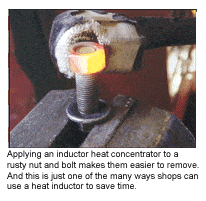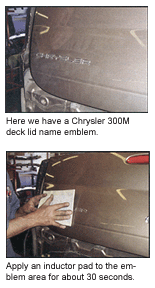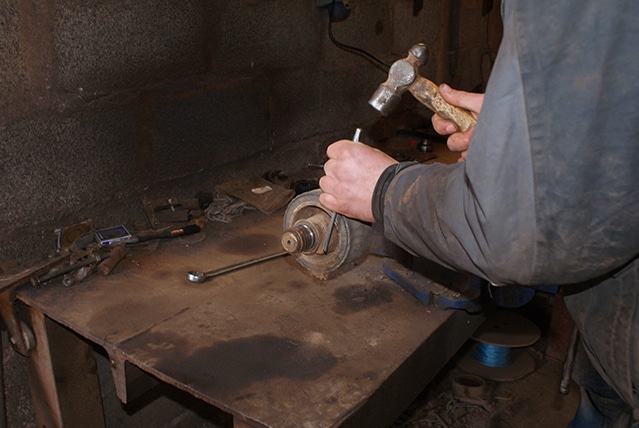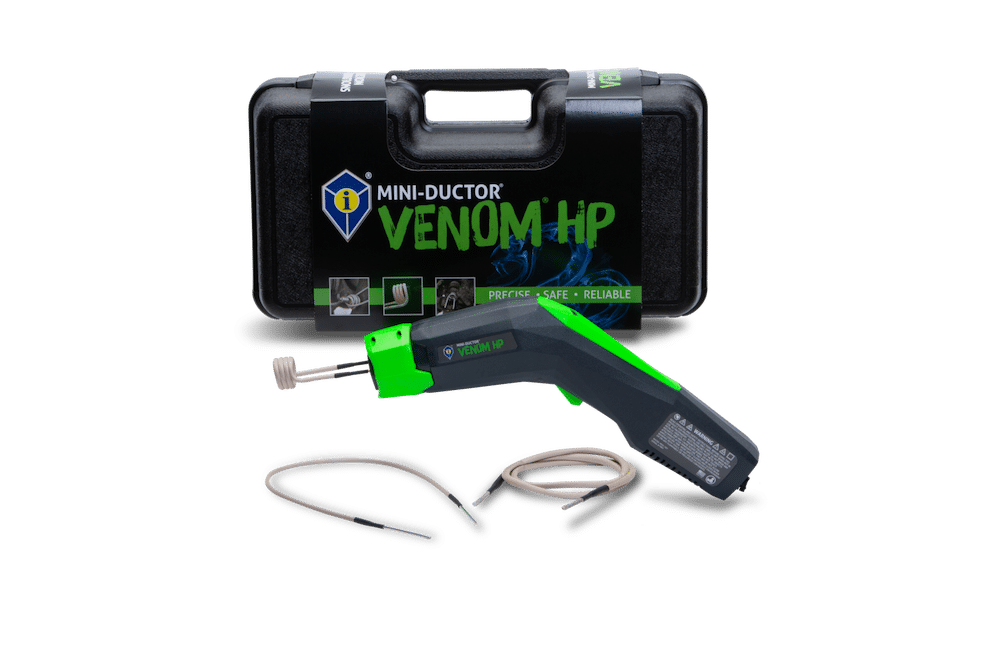
Article originally written by Mike West
I’ve made a lot of misguided tool purchases through the years, but buying my heat inductor wasn’t one of them.
A fairly recent entrant into the tool side of the collision repair industry is the heat inductor.
“What’s that?” you ask.
Well, it’s nothing new really. Heat inductors have been around in various industries for about 100 years and are commonly used in the manufacturing
process for things like case hardening of gears and shafts. They’re also used in cook tops on stoves to allow a quicker, more even heat. But heat
inductors are relatively new to the collision repair industry. I first saw one demonstrated at NACE in 1999.
I try to resist buying gadgetry, but I admit that I’m very unsuccessful at it. I have a small room filled with very new-looking gadgets that are actually
quite old.
When I first saw the heat inductor being demonstrated, I was strongly attracted to its amazing attributes. I made only a token effort at resisting the
purchase and was told recently by the manufacturer that I have one of the first ones sold (no. 8, I think)!
Although it isn’t particularly unique that I have an early model of a tool, it is unusual that the tool isn’t in my room of unused tools and that the manufacturer
is still in business. Wow! I finally made a wise purchase. (I hope my wife reads this!) Even more impressive, we don’t just occasionally use our inductor.
We use it every day — sometimes several times a day.
What Is It?

Just what is a heat inductor?
I’ve always thought that to use a tool or a piece of equipment, it’s wise to understand how it works and what exactly it’s intended to do.
(I know that’s not an entirely accepted practice in our industry since it isn’t uncommon to walk out into your shop and find that someone has discovered
a new use for a tool that was never intended — such as using your nice flat-blade screwdriver as a chisel. My most recent discovery … I found
my helper using my 12-inch upholstery scissors to cut stainless steel screen for bumper cover reinforcement!)
So humor me a little here, so you can understand how a heat inductor works and what it’s intended to do for us.
Heat inductors are electromagnetic components. When electrical current passes through
wire, which is wrapped around a non-conductor (phenolic, plastic, etc.), it forms a high-frequency magnetic field. This magnetic field then travels
through a few inches of space, such as plastic trim, moldings, sound deadeners and glass, until it reaches the metal base (inductors don’t work on
fiberglass or ABS bodies). Once this magnetic field reaches the metal, it meets electrical resistance, which is what makes it work.
Try It, You’ll Like It
I think heat inductors are great tools to assist us in doing our jobs better. They have many uses where flameless heat or heat from the inside out is best.
I’ve had my inductor for five years and have had no problems whatsoever related to durability. And it gets a lot of use, every day, several times a day.
And even though I may have been one of the first shop owners to purchase and use a heat inductor, I’m not alone anymore. The manufacturer of my unit told
me that they now have several thousand units in the field.
Give an inductor a try. Your wife won’t be mad about your spending the money because you’ll actually use this tool!
Writer Mike West, a contributing editor to BodyShop Business, has been a shop owner for more than 30 years and a technician for more than 40 years. His shop in Seattle, Wash., has attained the I-CAR Gold Class distinction and the ASE Blue Seal of Excellence.
Less Costly Than Hydro-Forming
A relatively new use of inductors is in the complex forming of metal shapes for structural pieces in the automotive industry. Ever heard of hydro-forming?
Hydro-forming is a process that requires 30,000 PSI or more to form strong, complex, yet lightweight structural parts for automotive use. The Dodge
Ram uses this process in several areas — most noticeably, the radiator core support. This process bends seamless square or rectangular tubing
that’s relatively light into complex, high-strength shapes.
In contrast to hydro-forming, Hot Metal Gas Forming (HMGF) uses only 1,000 PSI to form the same type of shapes through the use of heat inductors. The heat
inductors are used to heat the metal to a formable temperature, and then gas is injected into the part, causing expansion of the heated area. The part
is actually encapsulated in tooling, which includes the heat inductor. When the part reaches the optimum temperature for forming, the gas is forced
into the part, causing the expansion of the metal against the designed tool wall — to take on the decided shape.
This represents a savings in tooling and production costs because of the significant reduction in pressure per square inch required for hydro-forming.
Quenching is an important part of this process because it speeds up production time and enhances the tempering procedure. Metal that’s formed this way
reduces forming costs, reduces weight and enhances fuel efficiency, while allowing the production of some very strong, complex forms. This process
allows a 50% expansion of steel and a 150% expansion of aluminum. That’s amazing!



